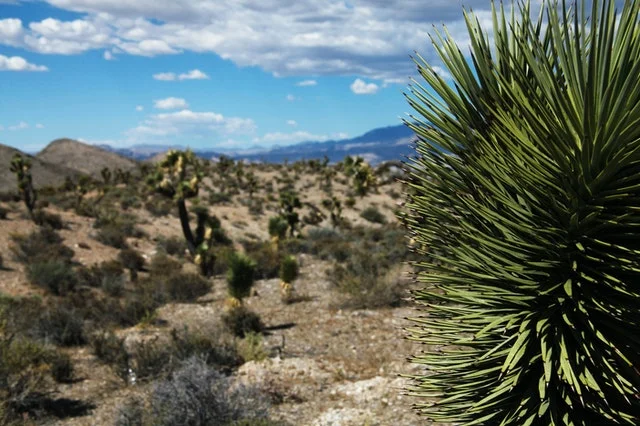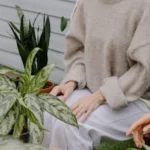Table of Contents
How to care for Yucca Rostrata plants
Yucca Rostrata is also known as the Blue Beaked Yucca plant. This is a unique species of plant and it is native to Northern Mexico and Western Texas.
Yucca Rostrata is an ornamental plant species and it is an evergreen that grows slowly. Yucca Rostrata is one of the toughest plants in the yucca species.
These plants are designed to withstand drought and they are used as an attractive addition to the garden in Canada, USA, and the UK. These plants are well known for being an exotic plant with large leaves.
Plant Size
The Yucca Rostrata can grow up to about ten feet in height and the leaves can be about two and half feet in length. Due to the potential size of these plants the space where they are going to be kept will need to be considered.
It is possible for these plants to be grown outside and this will enable them to reach their full potential in terms of growth. Young Yucca Rostrata plants will grow slowly but they will still need to have enough room to develop.
What Does Your Yucca Rostrata plants require?
Light Requirements
Yucca Rostrata plants tend to thrive in full indirect sunlight where they also have space and light. Excessive sunlight can cause the leaves to become discoloured and spots can appear on the leaves.
Yucca Rostrata plants that do not have bright indirect sunlight will not bloom and they will develop spindly leaves.
Temperature Requirements
Yucca Rostrata plants can tolerate a range of different temperatures. They usually do not do well in temperatures lower than seven degrees centigrade.
Soil Requirements
Yucca Rostrata plants do not have very specific needs in terms of the soils , however the soil does need to have good drainage.
When the roots of this plant are kept in too much water it will lead to a problem known as root rot and the plant will be unable to survive. It is best to use a heavier soil for this plant, so that it can hold the plant in place.
A good soil to use for Yucca Rostrata plants is a mixture of three parts sand to one-part peat. One good thing about this soil mixture is that it will; retain most of the water without it being too soggy and it will also retain some of the required nutrients.
Humidity Requirements
Yucca Rostrata plants will thrive when kept in sunny areas, but they do not require a high level of humidity. Although these plants do not need a high level of humidity they are more of an indoor plant, as they can’t cope with very cold temperatures.
How to water Yucca Rostrata plants
Due to the Yucca Rostrata being an exotic plant they can tolerate drought conditions. These plants also do not require a soil that is high quality.
Overwatering is a problem that can quickly kill this plant, therefore care needs to be taken regarding the amount of watering. Allow the top half of the soil to dry before rewatering the plant.
About an inch of water will be enough for this plant during the spring and summer months. The plant will require less water during the winter months.
How to fertilise Yucca Rostrata plants
Yucca Rostrata plants that have developed and become established will not need to be fertilised, however a small amount of fertiliser would be beneficial when establishing a plant.
When you are fertilising a Yucca Rostrata plant to promote growth it is a good idea to only feed it once a month during the main growing season.
Extra Tips for Yucca Rostrata Plants
Pests & Diseases
The Yucca Rostrata plant is resistant to pests and disease; however, overwatering can be a problem. Overwatering the Yucca Rostrata will lead to the leaves turning yellow and the roots of the plant will go soft.
One problem that can affect these plants is red spiders however to get rid of them just spray the leaves with water during the drier seasons and you should wipe the dust off the leaves on a regular basis.
Pruning
It is very easy to prune the Yucca Rostrata, remove the plant from its pot and prune about half way up the trunk. Use a pair of loopers or a saw to cut at the desired point, which should be at least half way up the trunk.
Replant the rooted end in a new pot and give it plenty of water to allow the roots to establish. The leaves of this plant will naturally grow back.
It is a good idea to repot the plant every couple of years and the repotting should be done in the spring months. It is a good idea to opt for a heavy container as this will prevent the plant from tipping over.
Propagation
There are two different ways that Yucca Rostra plants can be propagated which are through replanting the pups of the plant and the other way is using the rhizomes.
Propagation from The Pup
When propagating from the pup which is probably the easiest way and involves planting the pup that is naturally produced by the plant.
Wait until the pups are green before propagation as this will maximise the potential for the plant to survive.
Remove the pup from the plant and place them into their own container. It is a good idea to use some rooting powder as this will encourage the plant to establish roots faster, however the roots will grow even without this powder it will just take longer.
Propagation from Rhizomes
The second method of propagation is done by separating the rhizomes from the plant and replanting them into an appropriate type of soil.
Whatever type of propagation you opt for the plants will need to be given water however avoid overwatering. When there is too much moisture in the soil the pups can be killed, and plants will divide.
Until the plants have become established, they should only be given a small amount of water and the soil should only be slightly moist.
FAQ
How Fast Does Yucca Rostrata Grow?
Yucca Rostrata plants are slow growing plants and it will take about ten years to reach its maximum height. This plant will eventually become a focal point once it has grown.
What Is the Lifespan of Yucca Rostrata?
When cared for correctly and kept in a suitable environment the Yucca Rostra plant can last for between five and seven years.
Why Is A Yucca Rostrata Plant Dying?
One of the most common reasons is over watering, which causes the trunk to turn spongy and the leaves will become pale. It is possible to rapidly correct this problem by increasing the amount of drainage in the container and allow the soil to dry out completely.
Dealing with Yellow Leaves on the Yucca Rostrata
Yellow leaves on the Yucca Rostrata can be caused by overwatering. If you have this problem on your plant the best to way sort it is:
- Check the moisture level of the plant. Wet and soggy soil can cause the roots to rot. Reduce the amount of water that you are giving the plant.
- Move the Yucca Rostrata to a new pot where the soil can drain better. Be careful when moving the plant as you need to avoid any damage to the roots. It is a good idea to put this plant in a soil that is slightly sandy, as it will give better drainage.
- Check the underside of the Yucca Rostrata leaves and look for webs that have been left by mites. If you have mites on your plant treat with an acaracide pesticide.
How Do You Care for a Yucca Rostrata plant?
Yucca Rostrata plants make great indoor plants as they are very decorative. These plants are low maintenance therefore they make a great first plant.
They are resistant to many of the pests and diseases that normally affects indoor plants. One of the problems that can affect these plants is overwatering therefore take time to understanding how much water you need to give a Yucca Rostrata plant.
Do Yucca Rostrata plants need sun or shade?
Yucca Rostrata plants thrive in bright sunlight; however, this should not be direct sunlight. Direct sunlight can cause damage to the plant.
These plants are very tolerant and can tolerate a range of different conditions, but it can alter the plant slightly. Keeping the plant in areas with a lack of light will stunt the growth.
What’s wrong with my Yucca Rostrata?
If your yellow Yucca Rostrata has developed yellow leaves check the moisture of the soil as it can be a sign of overwatering.
Soil that is wet and soggy can result in the plant dying. To try and sort this problem allow the soil to dry out and correct the amount of water that you are giving the plant and improve the drainage in the pot.
Are Yucca Rostrata plants toxic?
Yucca Rostrata plants are toxic for pets due to the steroidal saponin. It is advisable to keep these plants out of the reach of animals.
Photo by Aubrey Haase from Pexels


